Today’s Current Affairs: 13th March 2023 for UPSC IAS exams, State PSC exams, SSC CGL, State SSC, RRB, Railways, Banking Exam & IBPS, etc
Table of Contents
Sodium Intake : WHO Report

According to the WHO Global Report on Sodium Intake, Reduction two million deaths can be prevented by 2025 and seven million by 2030 if policies recommended by the World Health Organization to reduce sodium intake are implemented.
- Of the 194 WHO member states, 55 per cent have implemented sodium reduction policies and other measures through mandatory and voluntary approaches.
- The global average salt intake is estimated to be 10.8 grams per day, more than double the WHO recommendation of fewer than 5 grams of salt per day (one teaspoon).
- Bread and bread products are the most targeted food category for sodium reduction across the implemented reformulation policies in member states.
- This was followed by meat, poultry, game or fish, ready-made and convenience foods and composite dishes and savoury snacks.
- Key salt reduction measures will generate an extra year of healthy life for a cost that falls below the average annual income or gross domestic product per person.
Sodium:
- Sodium (Na) is a chemical element of the alkali metal group(Group 1 ) of the periodic table.
- It occurs abundantly in nature in compounds, especially common salt—sodium chloride (NaCl)—which forms the mineral halite and constitutes about 80 per cent of the dissolved constituents of seawater.
MSME Competitive (LEAN) Scheme:

The Union Minister for MSME launched the MSME Competitive (LEAN) Scheme
- The scheme attempt to improve quality, productivity & performance, and capability to change the mindsets of MSME manufacturers and transform them into world-class manufacturers.
- Through the LEAN journey, MSMEs can reduce wastages substantially, increase productivity, improve quality, work safely, expand their markets, and finally become competitive and profitable.
- Under the scheme, MSMEs will implement LEAN manufacturing tools like 5S, Kaizen, KANBAN, Visual workplace, Poka Yoka etc under the able guidance of trained and competent LEAN Consultants to attain LEAN levels like Basic, Intermediate and Advanced.
- The government will contribute 90% of the implementation costfor handholding and consultancy fees.
- There will be an additional contribution of 5% for the MSMEs which are part of SFURTI clusters, owned by Women/SC/ST and located in the Northeast region.
- There will be an additional contribution of 5% for MSMEs which are registered through Industry Associations/ Overall Equipment Manufacturing (OEM) organizations after completing all levels.
Virtual Digital Assets:

The Finance Ministry recently brought out a notification placing all transactions involving virtual digital assets under the purview of the Prevention of Money Laundering Act (PMLA).
- According to the Income tax act, ‘virtual digital asset’ refers to any information, code, number, or token (not being Indian currency or foreign currency) generated through cryptographic means or otherwise and can be called by whatever name.
- It can be transferred, stored, or traded electronically.
- The definition of VDA also specifically includes a non-fungible token, i.e., NFT, or any other token of similar nature, by whatever name is called.
- Non-fungible tokens (NFTs) are assets that have been tokenized via a blockchain.
- They are assigned unique identification codes and metadata that distinguish them from other tokens.
- NFTs can be traded and exchanged for money, cryptocurrencies, or other NFTs.
- NFTs can represent digital or real-world items like artwork and real estate.
- They can also represent individuals’ identities, property rights, and more.
New Antibacterial Molecule Discovered:
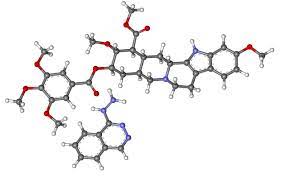
Researchers at the Indian Institute of Technology, Roorkee, recently discovered a new antibacterial molecule — IITR00693, that could help fight against drug-resistant infections.
- IITR00693 is a novel antibacterial small molecule.
- It has shown potent antibacterial activity against a wide range of Gram-positive and Gram-negative bacteria, including some of the most problematic drug-resistant strains.
- IITR00693 acts like a dual sword; it not only strikes down the most stubborn bacteria but also prevents the emergence of resistance, ensuring that it remains effective for generations to come.
- It enhances the activity of antibiotics that are used in the treatment of bacterial infections.
- It potentiates the activity of polymyxins against two notorious multidrug-resistant skin-infecting pathogens, Staphylococcus aureus, and Pseudomonas aeruginosa.
National Workshop Of Bamboo : National Bamboo Mission

The National Workshop of Bamboo Sector Development was conducted under the National Bamboo Mission (NBM) in New Delhi on 10th March 2023.
- National Bamboo Mission is a Centrally Sponsored Scheme started in the year 2006-07 and was subsumed under the Mission for Integrated Development of Horticulture (MIDH), for the years 2014-15 and 2015-16.
- MIDH is a Centrally Sponsored Scheme implemented from 2014-15 for the holistic development of horticulture in the country, covering fruits, vegetables, root and tuber crops, mushrooms, spices, flowers, aromatic plants, coconut, cashew and cocoa.
- The aim of the National Bamboo Mission will focus on the development of bamboo in limited States where it has social, commercial and economical advantages. in the
- Nodal Ministry: Department of Agriculture & Cooperation (DAC) under the Ministry of Agriculture & Farmers Welfare.
- Bamboo is majorly grown in North Eastern region and States including Madhya Pradesh, Maharashtra, Chhattisgarh, Odisha, Karnataka, Uttarakhand, Bihar, Jharkhand, Andhra Pradesh, Telangana, Gujarat, Tamil Nadu and Kerala.
- The initiative would assist farmers, local craftspeople, and other persons involved in the bamboo industry, including allied sectors, both directly and indirectly.
Cyclone Freddy:
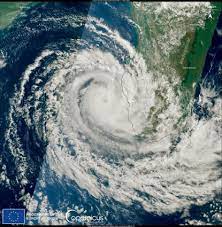
World Meteorological Organisation recently announced the constitution of an expert committee to evaluate the intensity and lifespan of Cyclone Freddy, which is on track to set a record as the longest-lasting tropical cyclone on record.
- It originated off the northern coast of Australia and became a named storm on February 6, 2022.
- It crossed the entire South Indian Oceanand traveled more than 8,000 kilometers, affecting Mauritius and La Réunion, before making landfalls in Madagascar two weeks later and then Mozambique.
- Freddy was the first tropical cyclone in the Southern Hemisphere to undergo six separate rounds of rapid intensification.
- It also holds the record for all-time accumulated cyclone energy (ACE) (storm strength during its lifetime) for the Southern Hemisphere.
- Freddy is fuelled by the energy provided by the warm ocean surface, consistently sourcing heat and moisture throughout its lifetime.
Nancy Grace Roman Space Telescope:
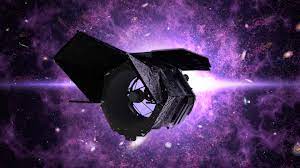
Scientists have created a gargantuan synthetic survey of a section of the universe that shows what we can expect from the Nancy Grace Roman Space Telescope’s future observations
- Nancy Grace Roman Space Telescope or Roman Space Telescope (RST) is a NASA deep space infrared observatory.
- Though originally referred to as the Wide Field Infrared Space Telescope (WFIRST), NASA renamed the mission in 2020 after Nancy Grace Roman, NASA’s first chief astronomer.
- RST will help answer essential astrophysics questions about dark energy, dark matter, exoplanets, and infrared astrophysics.
- It is set to launch around 2026 or 2027.
- The mission is projected to last for five years.
- RST will be situated at Lagrange point 2, a stable gravitational point between Earth and the sun located around 1 million miles (1.5 million kilometers) from our planet.
- The primary mirror of the RST has a diameter of 2.4 meters, the same size as the mirror of the Hubble Space Telescope.
- It will have a field of view that is 100 times greater than the Hubble infrared instrument, capturing more of the sky with less observing time.
- Roman’s gigantic field of view will enable the mission to create infrared images that are around 200 times larger than the Hubble Space Telescope.
- It has two other instruments: the Wide Field Instrument and the Coronagraph Instrument.
- The Wide Field Instrument performs microlensing surveys to find exoplanets, and the Coronograph Instrument performs high-contrast imaging and spectroscopy of nearby exoplanets.
U.S.-India Initiative On Critical And Emerging Technology (iCET):

India’s Minister of Commerce and Industry and U.S. Secretary of Commerce welcomed the recently launched U.S.-India initiative on Critical and Emerging Technology (iCET).
- The National Security Advisors of India and the US led the inaugural meeting of the iCET in Washington, DC.
- U.S.-India initiative on Critical and Emerging Technology (iCET) was launched by the US President and Indian Prime Minister on the sidelines of the Quad summit on May 2022.
- Goal: To elevate and expand Indo-U.S. strategic technology partnership and defense industrial cooperation between the governments, businesses, and academic institutions of the two countries.
- The initiative will be spearheaded by the National Security Council Secretariat in India and the US National Security Council.
- The initiative would help forge links between the government, academia, and industry in areas such as AI, quantum computing, 5G/6G, biotech, space, and semiconductors.
Maiden Cross-Border Oil Pipeline : India-Bangladesh

Prime Ministers of India and Bangladesh will jointly inaugurate the maiden cross-border oil pipeline between the two countries.
- India-Bangladesh Friendship Pipeline (IBFPL) will carry diesel from Assam-based Numaligarh Refinery Ltd’s (NRL) marketing terminal at Siliguri in West Bengal to the Parbatipur depot of Bangladesh Petroleum Corporation (BPC).
- IBFPL is 5 Kilometers long, out of which 126.5 kilometer pipeline is in Bangladesh and 5 kilometers in India.
- The pipeline has a capacity of one million metric tonnes per annum (MMTPA).
- The total project cost for the construction of the IBFPL is Rs 377.08 crore.
- The project is built under grant assistance from the government of India.
Worst Forest Fires In Odisha:

Forest fires continue to rage in Odisha after the state recorded 642 large fire incidents from March 2-9, 2023 the highest in the country during the period, according to the Forest Survey of India (FSI) data.
- The eastern state recorded 96 major fires in different jungles also highest in the country.
- From all the other states combined, 189 active fire incidents were reported the same day, according to FSI.
- Odisha has recorded 871 large forest fires since November 1, 2022, the beginning of the forest fire seasons.
- This is also a national record for the season, official data showed. It was followed by Andhra Pradesh (754), Karnataka (642), Telangana(447) and Madhya Pradesh (316).
- Some of the fires may have also been caused by human-made reasons, the expert added.
- The tribal people set fire on forests for shifting cultivation, collection of mahua flowers and kendu leaves, he noted.
- Forest fires result in the loss of timber, fruit-bearing trees and medicinal plants.
- They also pose a threat to the wildlife and their habitat areas, said Biswajit Mohanty, former member of the National Board for Wildlife.
Antibiotic Drugs On livestock:

Researchers at the Indian Institute of Science (IISc), have found that grazing by livestock leads to lower carbon storage in soil compared to grazing by wild herbivores.
- Researchers found that this difference appears to be due to the use of veterinary antibiotics such as tetracycline on livestock.
- The researchers said that when released into the soil through dung and urine, these antibiotics alter the microbial communities in the soil in ways that are detrimental to sequestering carbon.
- The study states that although soils from the wild and livestock areas had many similarities, they differed in one key parameter called carbon use efficiency (CUE), which determines the ability of microbes to store carbon in the soil.
- The soil in the livestock areas had 19% lower CUE.
- Antibiotics such as tetracycline are long-lived and can linger in the soil for decades.
- Its use in cats, dogs, small mammals, horses, or birds to treat bacterial infections or other conditions is ‘off label’ or ‘extra label’.
Red Tide On The Coast Of Florida:
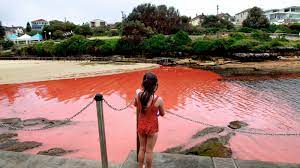
Red tide has recently occurred on the coast of Florida. It generally disappears by spring. It has been found since the 1800s in the Gulf of Mexico
- The ocean plants living in the sea grow uncontrollably and cause a bloom.
- The bloom caused by red-coloured algae is called red tide.
- It is harmful to fish, and marine mammals, and also has harmful effects on humans.
- Red tide is caused by a toxic algae species known as Karenia brevis.
- It occurs when the algae multiply in large numbers and form blooms, resulting in the water turning reddish-brown.
- The algae produce brevetoxins, which are fatal for aquatic life and capable of making humans sick
- The west coast of India is more prone to algal bloom.
- Algae like diatoms, cyanobacteria, haptophytes, and raphiphytes cause an algal bloom in India.
- Most of the algal blooms occur during the retreat of southwest monsoon and also during the pre-monsoon period.
- The temperature and the conditions are more favourable than that of the east coast.
Integrated Disease Surveillance Programme:
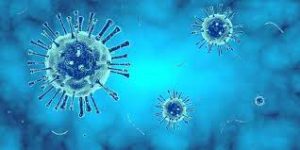
The Union Health Ministry gave a statement that it is keeping a close watch on the Seasonal Influenza situation, through the Integrated Disease Surveillance Programme network on a real-time basis.
- The Integrated Disease Surveillance Program (IDSP) was initiated with assistance from the World bank, in the year 2004.
- The Programme continued during the 12th Plan (2012–17) under National Health Mission
- It works under the Ministry of Health and Family Welfare.
- The Central Surveillance Unit (CSU) at the National Centre for Disease Control (NCDC), receives disease outbreak reports from the States/UTs on weekly basis.
- The surveillance data is collected on three specified reporting formats, namely “S” (suspected cases), “P” (presumptive cases), and “L” (laboratory confirmed cases) filled by Health Workers, Clinicians, and Laboratory staff respectively.
- Objective is to:
- Strengthen/maintain a decentralized laboratory-based IT-enabled disease surveillance system for epidemic-prone diseases.
- Monitor disease trends and to detect and respond to outbreaks in the early rising phase through trained Rapid Response Teams (RRTs).
National Startup Advisory Council : Sixth Meeting To Be Held Soon
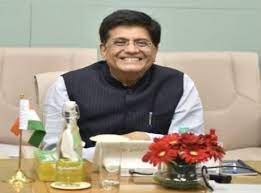
The sixth meeting of the National Startup Advisory Council (NSAC) is to be held soon.
- National-Startup-Advisory-Council was constituted by the Department for Promotion of Industry and Internal Trade (DPIIT).
- It works under the Minister of Commerce and Industry
- It advises the government on measures needed to build a strong ecosystem for nurturing innovation and startups in the country to drive sustainable economic growth and generate large scale employment opportunities.
- Composition of the Council:
- Chairman: Minister for Commerce & Industry.
- Convener of the Council: Joint Secretary, Department for Promotion of Industry and Internal Trade.
- Ex-officio Members: Nominees of the concerned Ministries/Departments/Organizations not below the rank of Joint Secretary.
- Non-official members, to be nominated by the Central Government.




